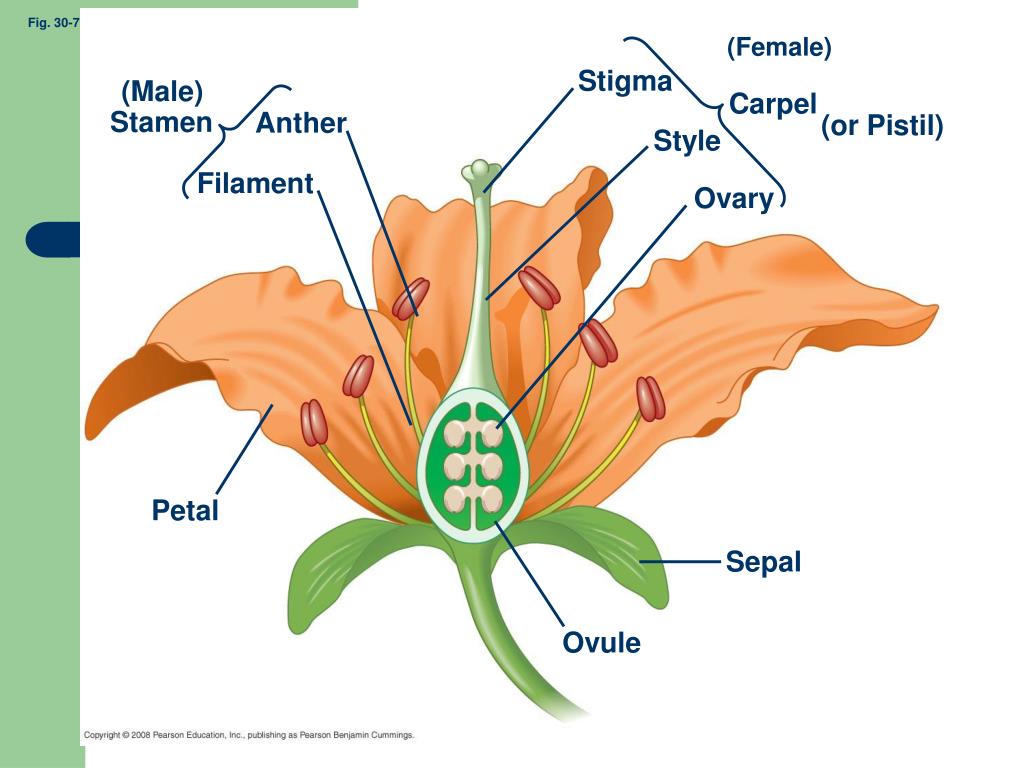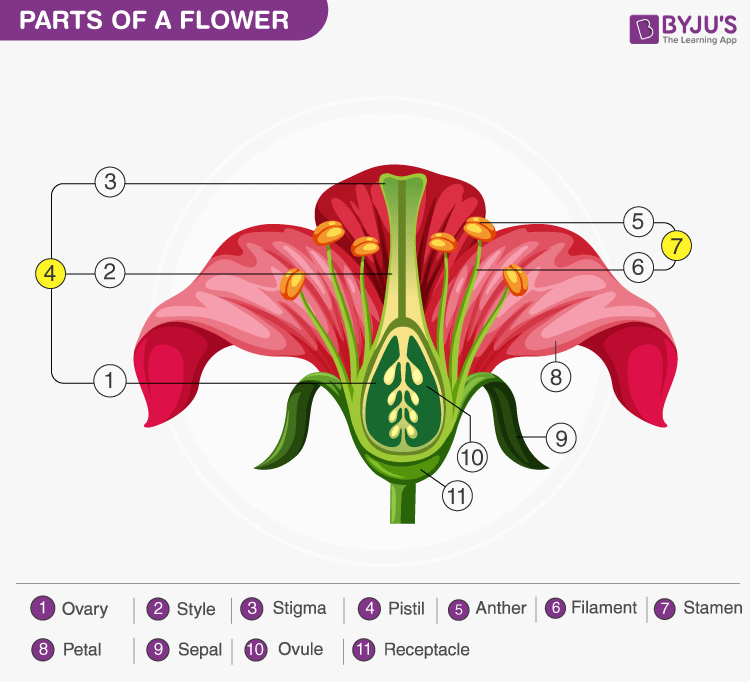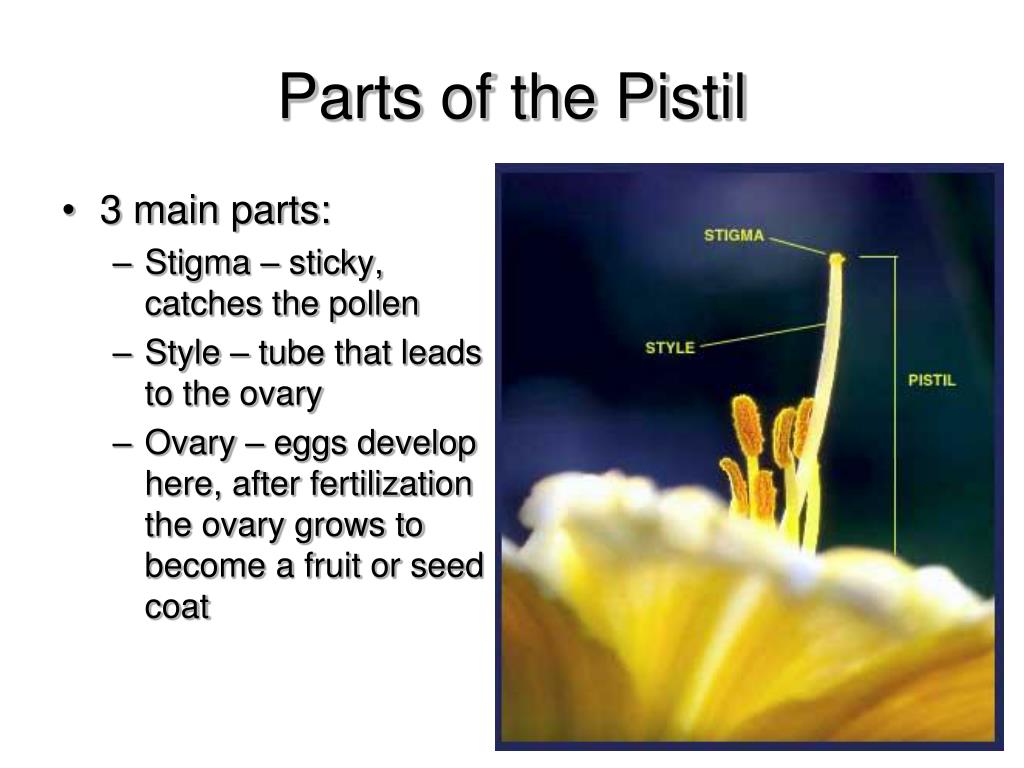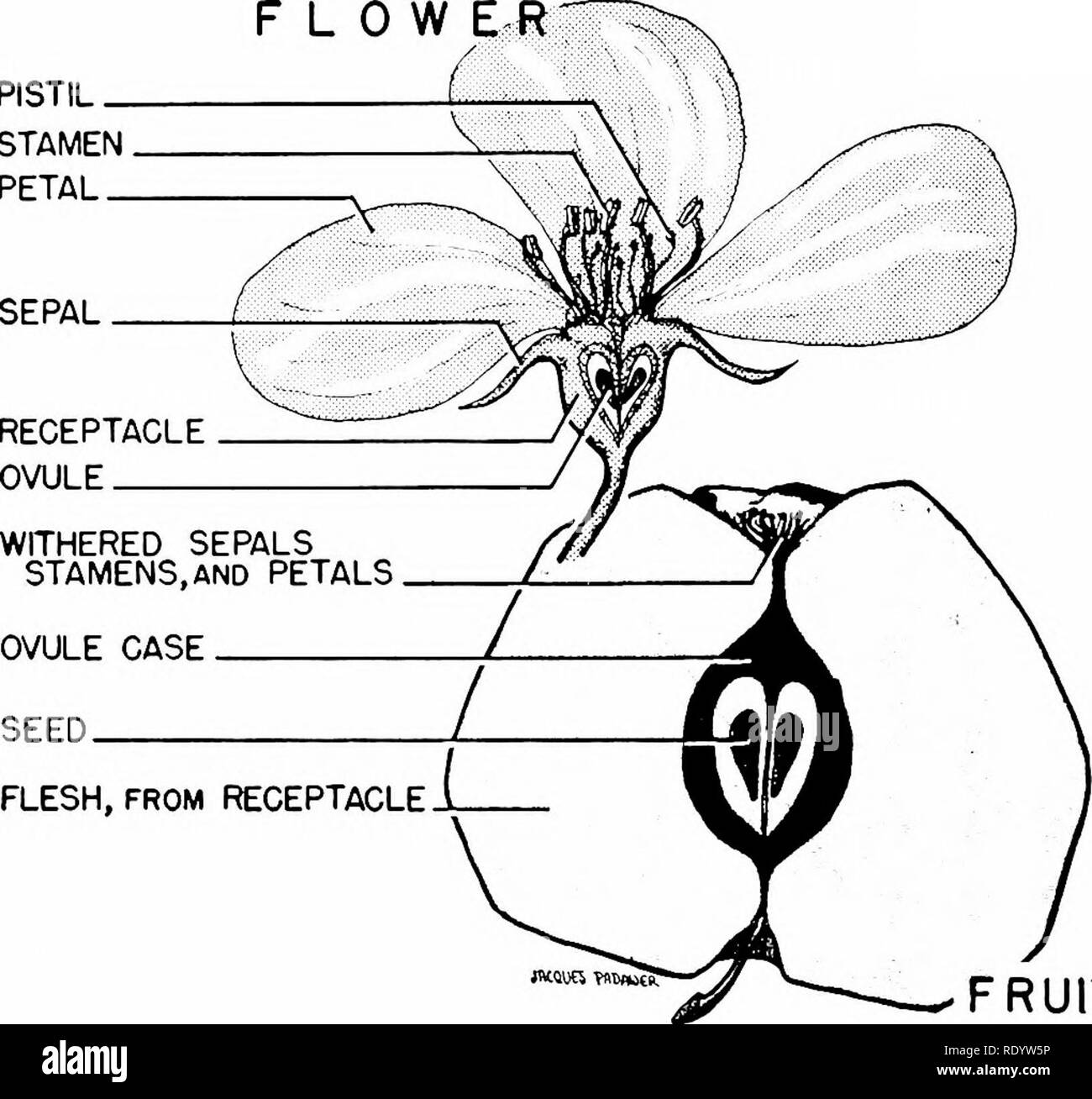The Pistil: Heart of the Flower and Seed of Life

The pistil, often overlooked amidst the vibrant petals and fragrant stamens, is the unsung heroine of the flowering plant. It is the female reproductive organ, the central command center responsible for receiving pollen, facilitating fertilization, and ultimately, nurturing the development of seeds and fruits. Understanding the structure and function of the pistil is crucial to appreciating the intricate beauty and vital role of flowering plants in our ecosystem.
Anatomy of the Pistil: A Three-Part Symphony
The pistil, in its simplest form, comprises three distinct parts: the stigma, the style, and the ovary. These components work in perfect harmony to ensure successful reproduction.
The Stigma: The Pollen Receptionist
The stigma is the uppermost, pollen-receiving part of the pistil. Its primary function is to capture pollen grains, acting as a landing pad for the male gametophytes. To facilitate this crucial task, the stigma is often sticky or feathery, sometimes covered in tiny hairs or protrusions, maximizing its surface area and trapping potential pollinators’ offerings. The texture and surface of the stigma can also be species-specific, playing a role in pollen compatibility and preventing cross-pollination with incompatible species. Imagine it as a highly selective doorman, only allowing the right pollen grains to enter the club.
The Style: The Pollen Tube Highway

The style is a slender, stalk-like structure that connects the stigma to the ovary. It acts as a conduit, guiding the pollen tube – a microscopic extension of the pollen grain – towards the ovules within the ovary. The style is crucial for ensuring that the pollen tube reaches its destination and successfully delivers the sperm cells for fertilization. The length of the style can vary significantly depending on the plant species, often correlating with the pollination mechanism employed. For example, plants pollinated by long-tongued insects or birds may have longer styles to ensure effective pollen transfer.
The Ovary: The Seed Nursery
The ovary is the enlarged, basal portion of the pistil that contains one or more ovules. Each ovule houses the female gametophyte (embryo sac), which contains the egg cell. After fertilization, the ovules develop into seeds, and the ovary itself matures into a fruit, providing protection and dispersal mechanisms for the seeds. The number of ovules within the ovary directly influences the potential number of seeds that a fruit can produce. The ovary is the heart of the pistil, the nurturing chamber where the magic of fertilization culminates in the creation of new life.

From Pollination to Fertilization: A Journey of Life
The journey from pollination to fertilization within the pistil is a fascinating and complex process. It involves intricate signaling pathways and precise coordination between the male and female gametophytes.
Pollination: The process begins with pollination, the transfer of pollen grains from the anther (male reproductive part) to the stigma. This can occur through various agents, including wind, water, insects, birds, and even mammals.
Pollen Grain Recognition: Once a pollen grain lands on the stigma, the stigma determines whether the pollen is compatible. Incompatible pollen grains may be rejected, preventing fertilization.
Pollen Tube Growth: If the pollen grain is compatible, it germinates and produces a pollen tube. This tube grows down through the style, guided by chemical signals released by the ovule.
Reaching the Ovule: The pollen tube eventually reaches the ovule, entering through a small opening called the micropyle.
Fertilization: Inside the ovule, the pollen tube releases two sperm cells. One sperm cell fertilizes the egg cell, forming the zygote, which will develop into the embryo of the seed. The other sperm cell fuses with the central cell, forming the endosperm, which provides nourishment for the developing embryo. This process, unique to flowering plants, is known as double fertilization.
Seed and Fruit Development: After fertilization, the ovule develops into a seed, and the ovary develops into a fruit. The fruit protects the seed and aids in its dispersal, ensuring the continuation of the plant’s life cycle.

Diversity in Pistil Morphology: Adapting to the Environment
The morphology of the pistil can vary significantly across different plant species, reflecting adaptations to diverse pollination strategies and environmental conditions. Some notable variations include:
Carpel Number: The pistil can be composed of one or more carpels, which are the basic units of the pistil. A pistil formed from a single carpel is called a simple pistil, while a pistil formed from multiple fused carpels is called a compound pistil.
Ovary Position: The position of the ovary relative to the other floral parts (sepals, petals, and stamens) can be superior, inferior, or half-inferior. This variation is often associated with different pollination syndromes.
Stigma Shape and Size: The shape and size of the stigma can vary depending on the pollination mechanism. For example, plants pollinated by wind often have feathery stigmas to capture wind-borne pollen, while plants pollinated by insects may have sticky stigmas to adhere to the insect’s body.
Style Length: As mentioned earlier, the length of the style can vary, often correlating with the pollination mechanism.
The Pistil’s Role in Agriculture and Horticulture
Understanding the pistil is crucial for successful agriculture and horticulture practices. Manipulating pollination and fertilization can significantly impact crop yields and fruit quality.
Controlled Pollination: In agriculture, controlled pollination techniques are used to ensure successful fertilization and maximize crop yields. This involves manually transferring pollen from the anthers to the stigmas of selected plants, often to create hybrids with desirable traits.
Fruit Set: The development of the ovary into a fruit is known as fruit set. Understanding the factors that influence fruit set, such as pollination success and environmental conditions, is crucial for maximizing fruit production.
Parthenocarpy: In some plants, fruits can develop without fertilization, a phenomenon called parthenocarpy. These fruits are typically seedless and can be commercially desirable.
The Pistil: More Than Just a Reproductive Organ
The pistil is more than just a reproductive organ; it is a symbol of life, fertility, and the enduring power of nature. Its intricate structure and complex function highlight the remarkable adaptations that have allowed flowering plants to thrive and dominate terrestrial ecosystems. By understanding the pistil, we gain a deeper appreciation for the beauty and complexity of the natural world and the vital role that flowering plants play in our lives.
FAQ about the Pistil
Q: What is the difference between a pistil and a carpel?
A: A carpel is the basic unit of the pistil. A pistil can be composed of one or more carpels. If a pistil is formed from a single carpel, it is called a simple pistil. If a pistil is formed from multiple fused carpels, it is called a compound pistil.
Q: What is the role of the pollen tube?
A: The pollen tube is a microscopic extension of the pollen grain that grows down through the style towards the ovule. It carries the sperm cells to the ovule for fertilization.
Q: What is double fertilization?
A: Double fertilization is a unique process in flowering plants where one sperm cell fertilizes the egg cell, forming the zygote, and the other sperm cell fuses with the central cell, forming the endosperm.
Q: Why is the stigma sticky?
A: The stigma is often sticky to help capture pollen grains. The sticky surface allows pollen grains to adhere to the stigma, increasing the chances of successful pollination.
Q: What happens to the ovary after fertilization?
A: After fertilization, the ovary develops into a fruit, which protects the seeds and aids in their dispersal.
Conclusion
The pistil, often hidden within the flower’s intricate architecture, is the epicenter of plant reproduction. From the receptive stigma to the nurturing ovary, each component plays a critical role in the journey from pollination to seed development. Its varied morphology reflects the diverse adaptations of flowering plants to their environments and pollination strategies. Understanding the pistil is not only essential for botanists and agriculturalists but also enriches our appreciation for the complex and beautiful world of flowering plants, the very foundation of much of our terrestrial ecosystem and food supply. The pistil, therefore, stands as a testament to the power and ingenuity of nature’s design.


